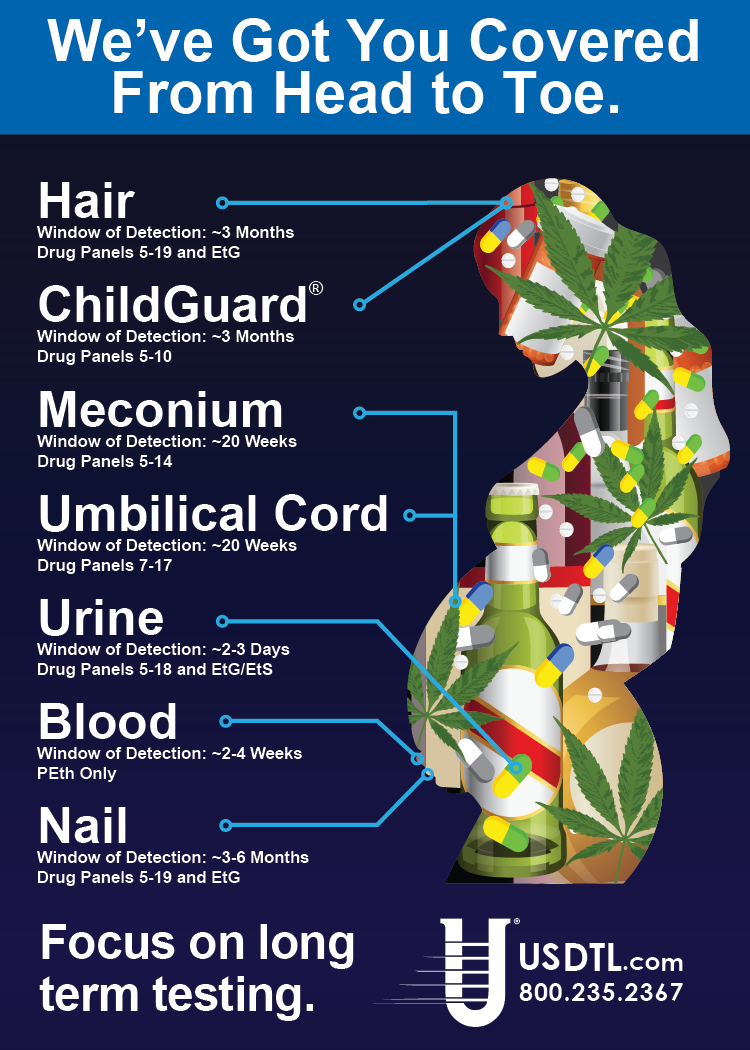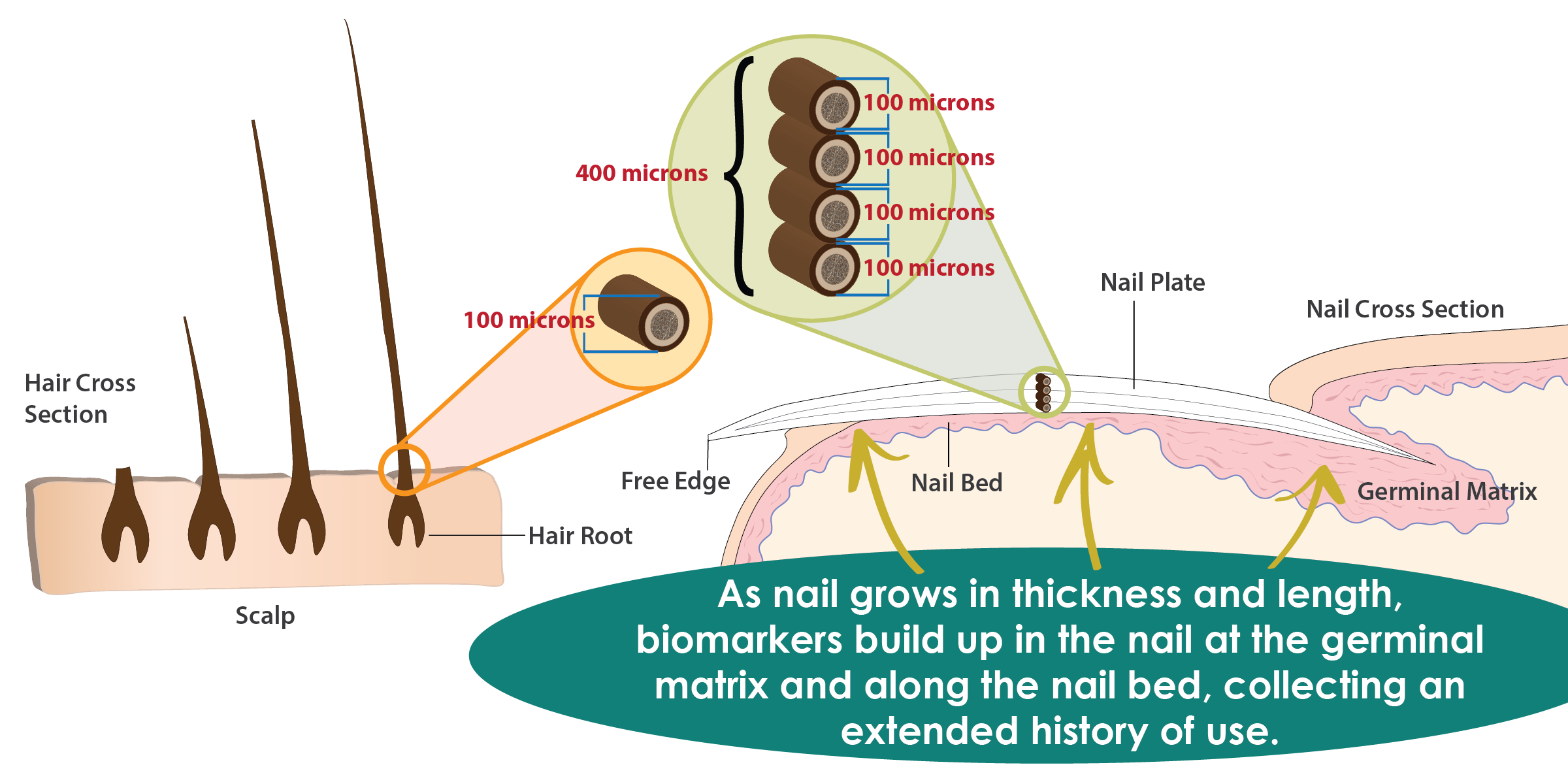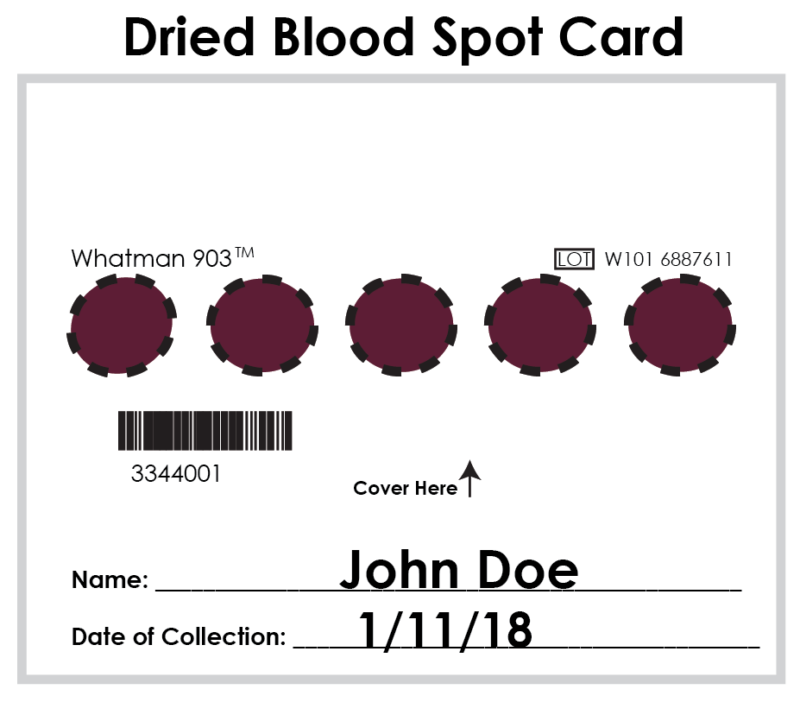Drug Testing Research
USDTL Major Research Projects
Testimonial
Yale School of Medicine Testimonial
Specimens We Test

Fingernail Drug Testing
Highly stable, simple to collect, and easy to ship and store, fingernails provide a test sample that is at the cutting edge of drug and alcohol testing. Fingernails are made up of keratin, the same material that hair is made of. As the nail grows, substances can pass from the blood vessels below the nail into the keratin fibers where they become trapped. Fingernails are four times thicker than the typical strand of hair and often capture more of a substance than hair can. Biomarkers become locked in keratin fibers along the entire length of the nail, and can be detected up to 3-6 months after drug or alcohol abuse. Environmental exposure to illicit substances can be detected immediately in nail samples. When drugs or alcohol are ingested, biomarkers can be found in nails as early as 1-2 weeks after. The time period during which drug or alcohol ingestion can be detected depends on the substance used, the amount used, and personal metabolism. Fingernail samples are clipped and collected by the donor in front of a trained collection staff member. A clipping of 2-3 mm long (about the width of a quarter) from all ten fingernails will give about 100 mg of sample, the ideal amount for screening and confirmation. Larger profiles may require more. We recommend weighing the specimen on a jeweler’s scale.

Hair Drug Testing
Recently, hair testing has come to be seen as a powerful tool for the detection of drug and alcohol abuse. Hair provides a long-term history of drug and alcohol abuse by trapping biomarkers in the fibers of the growing hair strand. When collected close to the scalp, hair can provide up to a 3 month history of alcohol and drug abuse. Hair offers a sample that is simple to collect, somewhat difficult to adulterate, and easy to ship. A 1.5 inch sample of about 200 strands of hair (about the size of a #2 pencil) closest to the scalp will give 100mg of hair, the ideal sample for screening and confirmation. For EtG, add-ons and/or tests above 10-panel, 150mg of specimen is recommended. We recommend weighing the specimen on a jeweler’s scale. If scalp hair is not available, an equal amount of body hair may be collected. When referring to head hair, we are referring to scalp hair only. Body hair refers to all other types of hair (facial, axillary, etc).
D/L Methamphetamine Isomer testing is available upon request for specimens that test positive for methamphetamine.
Adult PEth Testing – Dried Blood Spots
Dried blood spot collection is the fastest, most convenient way to test for phosphatidylethanol (PEth)Phosphatidylethanol (PEth)PEth is created in red blood cells where it exists as part of the cell membrane. Research suggests a PEth test can differentiate between incidental exposure (hand sanitizer use, etc.) and the intentional use of ethanol. A PEth test in blood gives up to approximately 2-4 week history of alcohol (ab)use. We offer PEth testing in both dried blood spots and whole blood. The specimen amount is 5 dried blood spots from a finger puncture or 5 ml of blood from a standard blood draw using anticoagulation tube collection.. Standard collection supplies provided include 2 lancets, 2 non-ethanol based alcohol pads, gauze, a collection card, and the dried blood spot drying box. We also provide the requisition form for the collection, which includes all necessary bar code stickers to maintain a proper chain-of-custody. Unlike venipuncture, dried blood spot collection is performed by the individual being tested (the donor) and can be observed by any staff member, after a short training session. The dried blood spot drying box makes collection even easier by eliminating wait time. PEth is an abnormal phospholipid formed in red blood cells following alcohol exposure. PEth in blood exists as a component of the red cell membrane. PEth is a mid to long-term alcohol biomarker, and a positive result (measuring phosphatidylethanol species 16:0/18:1) is an indication of alcohol exposure during the ~2-4 weeks prior to specimen collection.

Contact USDTL
1.800.235.2367
Client Services
By Phone: 1.800.235.2367
Business Hours (CST)
Monday....................7am-7pm
Tuesday....................7am-7pm
Wednesday.............7am-7pm
Thursday..................7am-7pm
Friday........................7am-7pm
Saturday...................8am-5pm
Newsletters, Posters, and Catalogs
Our print materials will keep you up to date on the latest news in drug and alcohol testing.
Request Your Collection Supplies
For your convenience, USDTL provides test collection supplies at no additional charge.


